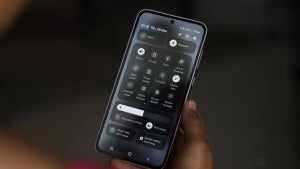What is Project Fi?
Google’s Project Fi is a mobile phone plan with a difference. It caps your bills, chooses the fastest network for your location, and reduces the cost of using data abroad.
The catch? It’s not available on every phone, it’s only available for U.S. residents, and you’ll need to use a lot of data to make it worthwhile.
Project Fi is Google’s attempt to disrupt the cellular network space. The big selling point is an upper limit on your phone bill, so no matter how much data you use, you won’t get a nasty surprise at the end of the month.
Many of us have been whacked with a big bill after using more than our plan allows – usually because of data. Just browsing your news feed can rack up the gigabytes in videos and pictures, so Project Fi could save you a lot of money… if you use a lot of data.
How much does Project Fi cost?
The plan costs $20 per month for unlimited domestic texts and calls, and unlimited international texts. Data costs an additional $10 per gigabyte, no matter where you are in the world, up to a maximum of $60. Once you’ve used 6GB, the rest is free, with no reduction in speed until you reach 15GB.
Surprisingly, there’s no minimum spend on data. If you use 1GB, you pay $10, so if your monthly bills jump up and down like a kid on a trampoline, expect to pay less with Project Fi. It’s both rare and impressive that Google has chosen to protect consumers from overspending without imposing a minimum, too.
You can also save a bit more if you add more people to the plan. For example, if you add two people, you’re only charged for the first 10GB ($100, or $50 each). That’s a saving of $20 ($10 each) over two individual sign-ups.

What makes Project Fi better than other mobile plans?
Aside from savings, Project Fi’s other advantages are also pretty rare in the cellular world. First, you get access to three 4G networks (Sprint, T-Mobile, and US Cellular) and one million Wi-Fi hotspots. Project Fi will determine the fastest connection for your location and switch you to it automatically, so you can always browse at top speed without fiddling with settings.
Another huge win for Project Fi’s customers is international data roaming. In over 170 countries, you get the same data benefits and prices as under your usual plan. There are no hidden fees. Calls cost 20 cents per minute, however, and do check your destination is included in the plan before you travel.
How do you sign up for Project Fi?
Before signing up, check you use enough data to make the plan worthwhile. You can do this by looking at an old bill, or checking data usage on your smartphone if your device supports it (most do). If you rarely use more than two or three gigabytes, there are cheaper plans out there – especially when you factor in calls and texts.
But if Project Fi could reduce your bills, then the first thing to do is make sure you have a supported phone. Only certain phones have the tech to “intelligently shift networks” and at the moment they’re limited to the Google Pixel, Nexus 5/6, and Moto X4.
You can, of course, order a new phone with Project Fi and they’ll throw in 0% financing and insurance for $5 per month. Your choice is still restricted, though, so don’t expect to find Project Fi on any iPhones anytime soon. You also need to be a U.S. resident.
But provided you’ve got or are willing to buy a supported phone, and you live in the U.S., just head to the Project Fi website to sign up.
For data-junkies, Project Fi makes financial sense. But if you prefer a book to watching Netflix, conversation to Spotify, or daydreaming to updating Instagram, you’ll have to look a bit harder to get excited about it.


